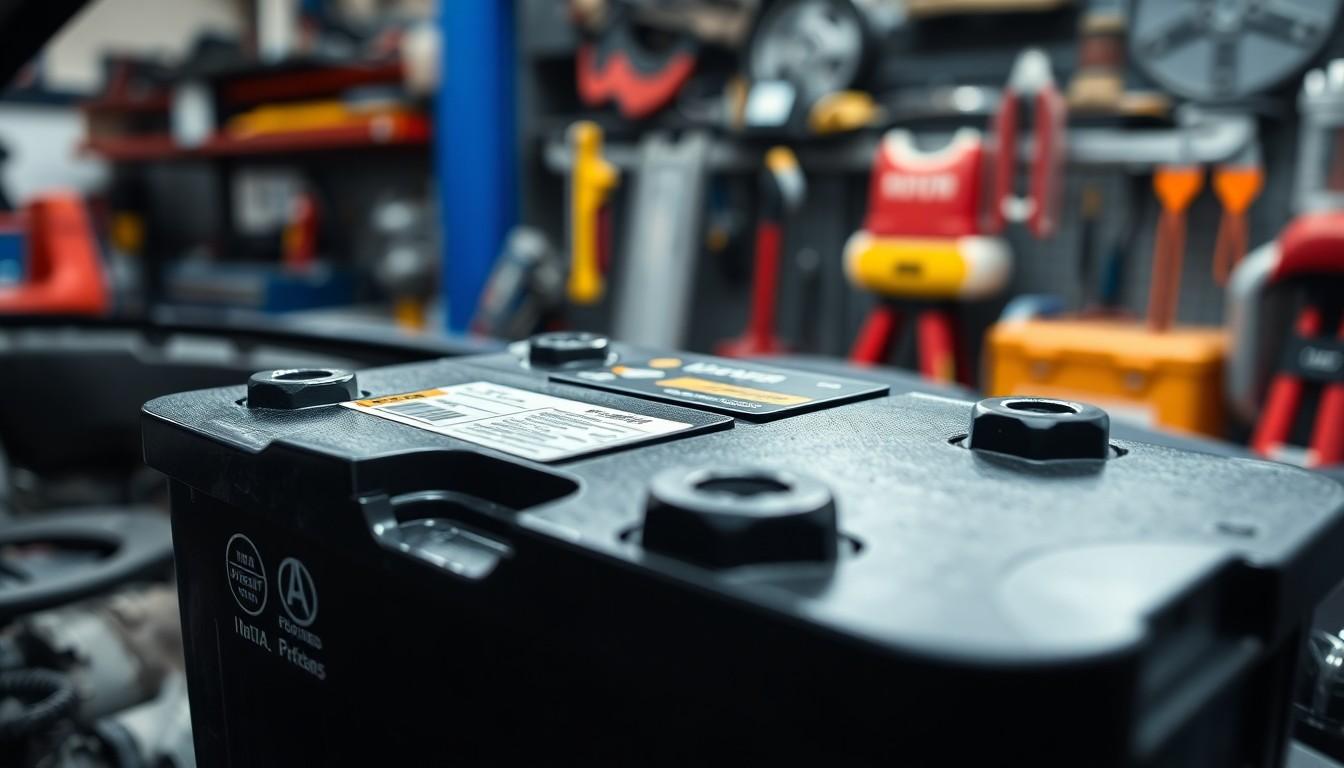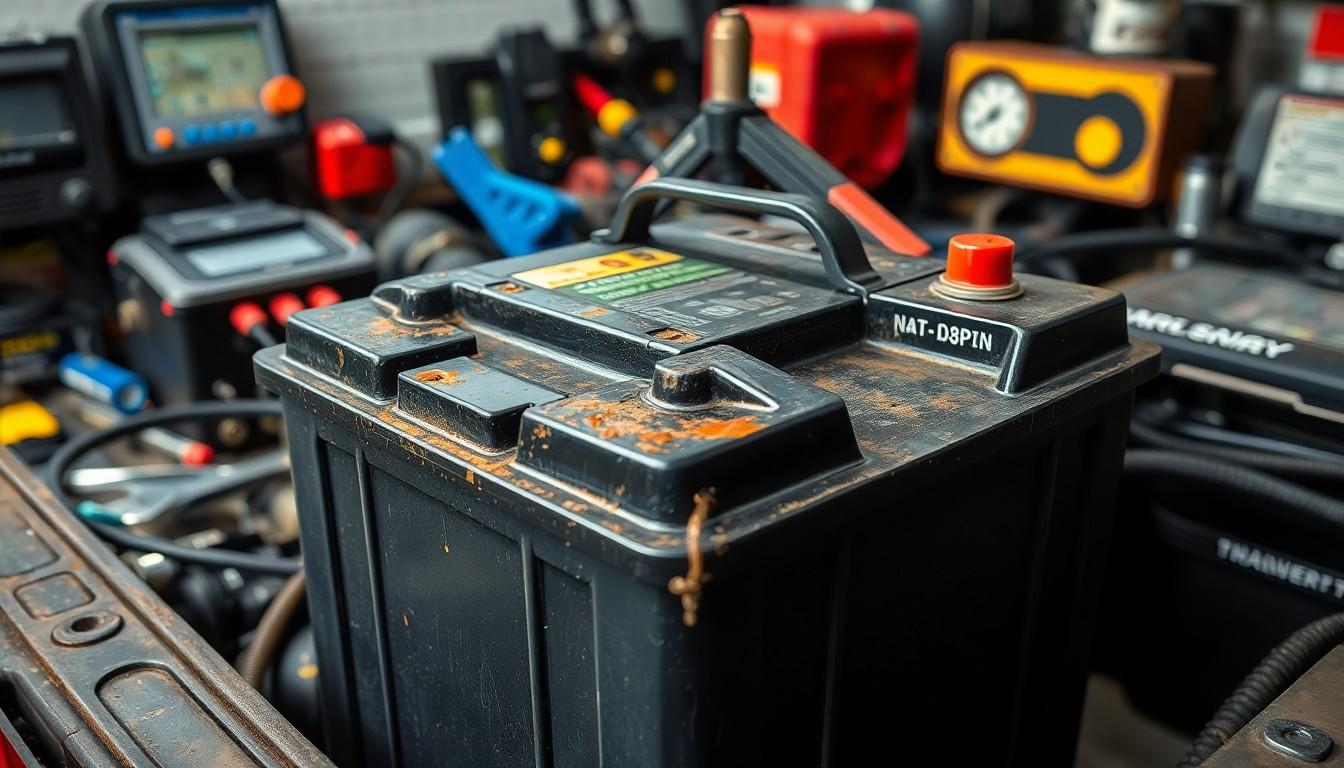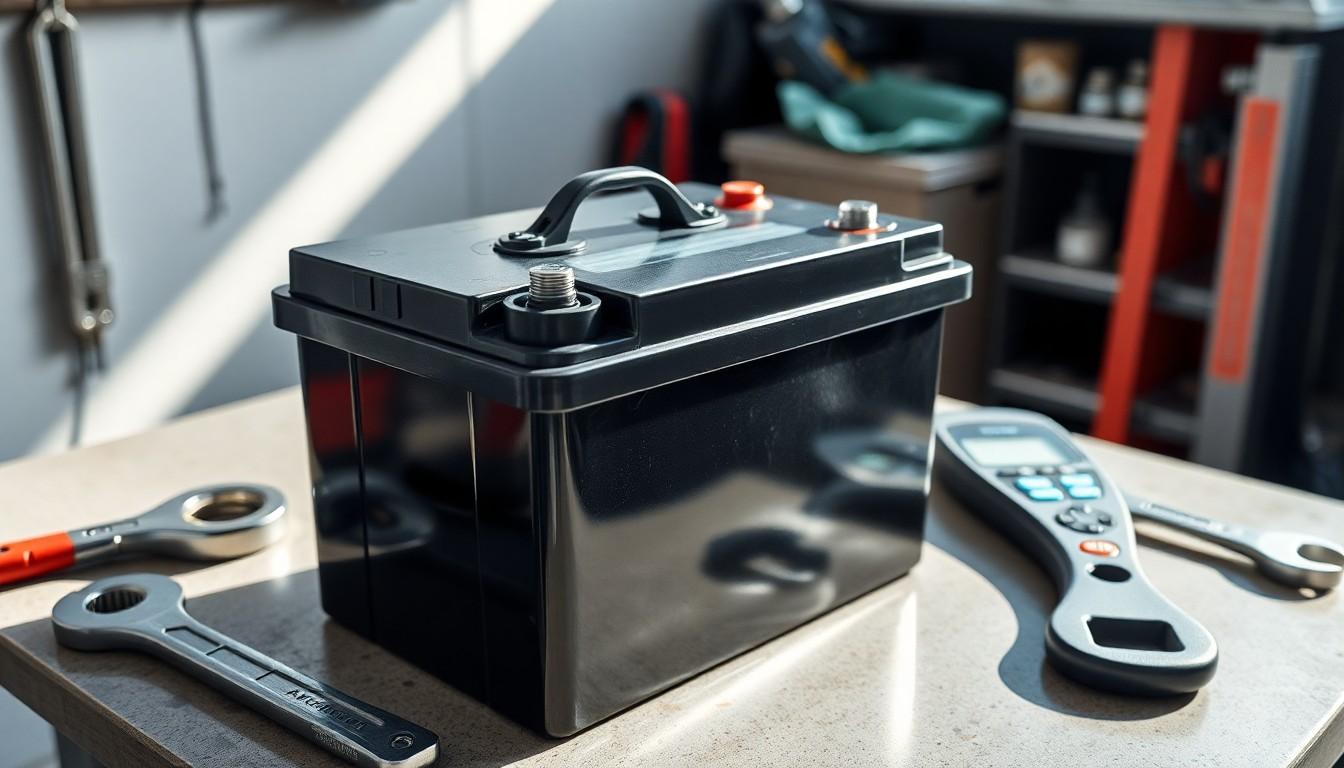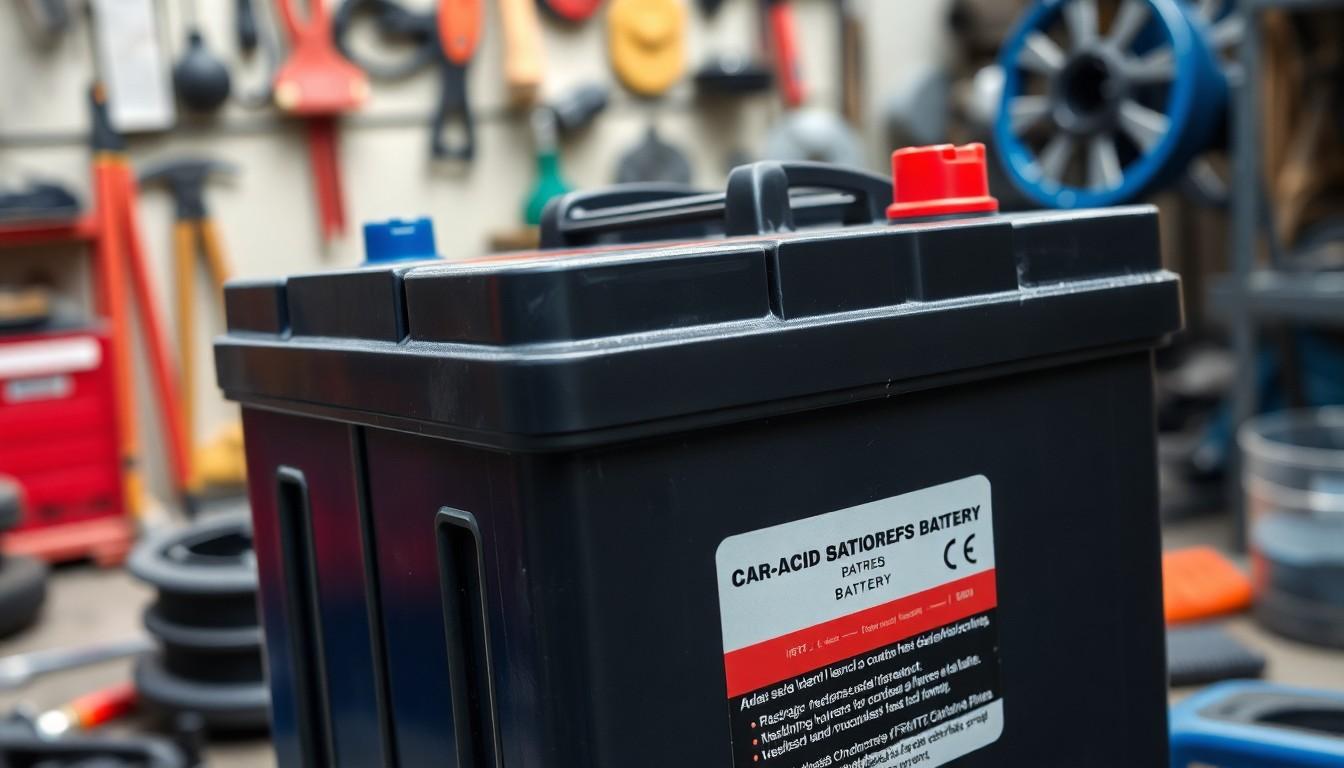Ever found yourself stranded with a dead car battery? We’ve all been there, and it’s never convenient. Understanding how long car batteries last can save you from that frustrating situation when you least expect it.
Most car batteries typically last between 3-5 years, but several factors can significantly impact their lifespan. From extreme temperatures to your driving habits, many elements determine whether your battery will die prematurely or exceed expectations. We’ll help you recognize the warning signs of a failing battery and share practical tips to extend its life.
Understanding Car Battery Lifespan
Car batteries typically last between 3 to 5 years, though this timeframe varies based on several factors. Many drivers experience unexpected battery failure because they’re unaware of their battery’s actual age or condition. Understanding what affects battery life helps you anticipate when a replacement might be necessary rather than facing a surprise breakdown.
The chemical reactions inside a car battery gradually degrade its internal components over time. Lead-acid batteries—the most common type found in vehicles—contain lead plates submerged in an electrolyte solution that creates electricity through chemical reactions. These reactions slowly corrode the plates and reduce the battery’s capacity to hold a charge.
Battery performance naturally declines as the battery ages. A new battery operates at nearly 100% capacity, but after three years, many batteries function at only 70-80% of their original power. This reduced capacity becomes particularly noticeable during cold weather starts when more cranking power is required.
Modern vehicles with many electronic features place additional demands on batteries. Power-hungry accessories like heated seats, advanced infotainment systems, and multiple USB charging ports draw electricity even when the engine isn’t running. These constant power demands accelerate battery wear and reduce overall lifespan compared to vehicles from previous decades.
Geographic location plays a crucial role in determining how long your battery lasts. Batteries in hot climates often fail faster due to increased rates of internal corrosion and water evaporation from the electrolyte solution. Meanwhile, extremely cold temperatures reduce a battery’s ability to deliver power, forcing it to work harder and potentially shortening its service life.
Average Lifespan of Car Batteries

Most car batteries last between 3 to 5 years before needing replacement. Climate conditions play a important role in determining exactly how long your battery will serve you, with cooler regions typically seeing longer lifespans than hotter areas.
Factors That Determine Battery Life
Several key factors influence how long your car battery remains functional. Time and usage patterns directly impact battery performance, as vehicles driven primarily on short trips often experience reduced battery life due to incomplete charging cycles. Different battery technologies offer varying longevity benefits – AGM and EFB batteries commonly last 4-7 years, while premium lithium-ion options can function effectively for up to 10 years under optimal conditions.
Driving habits significantly affect battery health, with frequent, longer drives allowing complete recharging that promotes extended life. Vehicles left sitting for extended periods suffer from natural self-discharge that gradually depletes power reserves. Regular maintenance practices like using a maintenance charger when a car sits unused can substantially extend battery life by preventing deep discharge situations.
Climate and Weather Effects
Geographic location dramatically impacts battery performance and longevity. Hot weather accelerates internal battery deterioration as temperatures under the hood can exceed 200 degrees Fahrenheit, causing battery fluid to evaporate and internal components to degrade. Batteries in warmer climates typically last around three years, while those in cooler regions often reach five years or more before failing.
Cold temperatures present different challenges for batteries by increasing the viscosity of internal fluids. This thickening forces batteries to work harder during engine starts, creating additional strain on their components. Extreme temperature fluctuations, whether hot or cold, place consistent stress on battery systems and accelerate their decline. Temperature-related impacts explain why identical vehicles with the same battery type often experience dramatically different battery lifespans depending on where they’re operated.
Signs Your Car Battery Is Failing

Recognizing the early warning signs of a failing car battery can save you from unexpected breakdowns and costly roadside assistance calls. Several clear indicators suggest your battery is reaching the end of its useful life or experiencing problems.
Warning Indicators on Your Dashboard
Dashboard warning lights serve as your vehicle’s communication system when battery problems arise. The battery warning light, typically shaped like a battery, illuminates when your charging system experiences issues. Many modern vehicles also display an alternator light which indicates the alternator isn’t properly charging the battery—a problem that often accompanies battery failure. These dashboard warnings shouldn’t be ignored as they’re designed to alert you before complete battery failure occurs. Regular diagnostic checks can help interpret these warning signals correctly and address potential problems early.
Physical Signs of Battery Deterioration
Physical inspection reveals many clues about your battery’s health. Slow engine cranking—where your engine takes noticeably longer to start—signals diminishing battery power. Dim or flickering headlights point to insufficient electrical output from a weakening battery. Corroded battery terminals, identifiable by their white, blue, or greenish powder buildup, interfere with proper electrical connections. A swollen battery case indicates internal damage from overcharging or extreme temperatures. Low battery fluid levels in batteries with removable caps suggest improper charging or excessive heat exposure. The presence of a sulfur or rotten egg smell near your battery signals acid leakage and imminent failure. Also, batteries approaching 3-5 years of age warrant increased vigilance since they’re nearing their typical end of life regardless of other symptoms.
How to Extend Your Car Battery’s Life

Extending your car battery’s lifespan requires consistent maintenance and mindful driving habits. Regular testing and proper charging practices can significantly impact how long your battery remains functional, especially given that most batteries only last 3-5 years under normal conditions.
Proper Maintenance Tips
Regular battery testing forms the foundation of effective maintenance, with experts recommending checks at least once every six months. Keeping battery terminals clean and free from corrosion ensures optimal electrical connections, preventing unnecessary strain on the system. For batteries that require it, checking and maintaining proper water levels prevents internal damage and extends operational life. Parking your vehicle in shaded areas or using sunshades reduces exposure to direct sunlight, which accelerates battery degradation in hot climates where batteries typically last only three years compared to five years in cooler regions. Using a maintenance charger like AAA’s Battery Tender proves particularly valuable for vehicles that sit unused for extended periods, maintaining optimal charge levels without risk of overcharging.
Driving Habits That Preserve Battery Power
Driving your vehicle frequently allows the battery to achieve full charging cycles, a critical factor in maintaining battery health. Short trips often don’t provide sufficient time for the battery to fully recharge after the energy-intensive starting process. Taking longer drives of 30-40 minutes weekly ensures complete recharging, especially important if your regular commute consists primarily of short distances. Limiting the use of high-power accessories when the engine isn’t running prevents unnecessary battery drain, preserving capacity for essential functions. Deep discharging damages battery cells over time, so avoiding activities that completely deplete your battery’s charge extends its useful life substantially. Vehicles driven regularly on longer routes typically experience better battery performance and longevity compared to those used primarily for brief errands.
When to Replace Your Car Battery

Knowing the right time to replace your car battery prevents unexpected breakdowns and costly roadside assistance calls. Three key indicators signal when your battery needs replacement: age, diminished performance, and visible physical damage.
Age
Car batteries typically last 3-5 years before needing replacement, with some extending to 6 years under optimal conditions. Geographic location significantly impacts this timeline—batteries in cooler climates often survive five years or longer, while those in hot regions may only last three years. Once your battery approaches this age range, it’s time to consider proactive replacement rather than waiting for failure. Regular testing becomes particularly important for batteries nearing the 3-year mark, as internal degradation accelerates during the final stages of battery life.
Performance
Declining battery performance offers clear signals that replacement time is approaching. Engine cranking that sounds slower than normal indicates your battery lacks sufficient power to start your vehicle efficiently. Dim headlights, especially while idling, suggest inadequate electrical output. Electronic systems may behave erratically with fluctuating power delivery from a failing battery. Dashboard warning lights, particularly the battery or check engine indicator, often illuminate when your vehicle’s computer detects charging system issues. If you’ve experienced multiple jump starts within a short period, your battery has likely reached the end of its useful life.
Physical Condition
Visual inspection reveals important clues about battery health that shouldn’t be ignored. Corrosion appearing as white, blue, or greenish powder on the terminals restricts electrical flow and indicates ongoing chemical reactions. A swollen or bulging battery case signals internal damage from excessive heat or overcharging. Low fluid levels visible through the casing (in non-sealed batteries) mean critical electrolyte has evaporated. Cracks or leaks in the battery housing create dangerous situations requiring immediate replacement. A rotten egg smell indicates sulfuric acid leakage, which damages surrounding components and poses safety hazards.
DIY vs Professional Replacement
DIY Replacement
DIY battery replacement attracts many car owners due to its cost-effectiveness, potentially saving $50-100 in labor charges. Convenience plays another major factor, allowing replacement on your own schedule without appointment delays. Basic tools like wrenches and gloves suffice for most battery swaps, making this an accessible project for moderately handy individuals. Many auto parts retailers offer free battery testing before purchase, ensuring you’re solving the correct problem. Step-by-step tutorials abound online, providing guidance for exact vehicle makes and models.
Even though these advantages, DIY battery replacement requires technical knowledge to handle electrical systems safely. Improper disconnection sequence risks damaging sensitive vehicle electronics in modern cars. Safety hazards exist from potential acid contact, electrical shorts, and physical injury when moving heavy batteries. Memory settings for radios, power windows, and other electronic features often reset during battery changes. Warranty coverage might become compromised if installation errors occur, particularly with incorrect terminal connections or inadequate securing of the battery.
Professional Replacement
Professional battery installation provides expert service from mechanics with training specifically for your vehicle’s electrical system. Proper safety protocols prevent damage to complex modern vehicle electronics during the replacement process. Comprehensive service typically includes cleaning terminals, checking the charging system, and ensuring proper connections. Warranties on both parts and labor offer protection against premature failure or installation issues. Additional diagnostic tests can identify underlying problems that might have contributed to battery failure.
The professional route does require scheduling an appointment that fits both your calendar and the shop’s availability. Service costs add $50-100 or more to the battery price, depending on vehicle complexity and location. Wait times at busy service centers can extend what should be a quick procedure into a longer commitment. Emergency replacements through roadside assistance services typically command premium pricing. Even though these considerations, professional installation remains the recommended option for newer vehicles with complex electrical systems and for drivers without mechanical experience.
Types of Car Batteries and Their Longevity

Understanding the different types of car batteries helps explain their varying lifespans. Each battery technology offers distinct advantages in terms of durability and performance under different conditions.
Conventional Lead-Acid Batteries
Conventional lead-acid batteries typically last between 3 to 5 years, depending on several environmental and usage factors. Climate plays a crucial role in determining battery longevity, with cooler regions allowing batteries to survive up to five years or more. Batteries in hotter climates often deteriorate faster, generally lasting only about three years before requiring replacement. Temperature, humidity, and frequency of vehicle use all directly impact how long these traditional batteries maintain optimal performance.
AGM and Gel Cell Batteries
AGM (Absorbed Glass Mat) batteries offer extended lifespans compared to conventional options, typically functioning effectively for 4 to 7 years. These batteries contain fiberglass mats saturated with electrolyte solution, creating a spill-proof design that enhances durability and reliability. Environmental conditions and driving patterns still affect AGM battery life, though they generally withstand temperature extremes better than standard lead-acid batteries.
Gel cell batteries feature a silica-based electrolyte that forms a gel-like substance, providing similar longevity benefits to AGM technology. These batteries typically last 4 to 6 years, offering reliable performance even in challenging conditions. The gel composition reduces internal evaporation and provides excellent resistance to vibration, making them suitable for vehicles with high electrical demands. Both AGM and gel cell batteries represent premium options that deliver longer service life even though their higher initial cost.
Conclusion
Your car battery’s lifespan depends on multiple factors from climate conditions to driving habits. While most last 3-5 years premium options like AGM batteries can extend that to 7+ years with proper care.
Don’t wait for complete failure before replacing your battery. Watch for warning signs like slow cranking dim lights and dashboard indicators especially as your battery approaches the 3-year mark.
Regular maintenance testing and mindful driving habits are your best defense against unexpected breakdowns. Whether you choose DIY replacement or professional installation understanding your battery’s condition will save you time money and roadside frustration.
Frequently Asked Questions
How long does a typical car battery last?
Most car batteries last between 3-5 years, though some may extend to 6 years under optimal conditions. Factors like climate, driving habits, and vehicle electronics affect longevity. After three years, many batteries function at only 70-80% of their original capacity, especially during cold weather starts.
How does climate affect my car battery life?
Climate significantly impacts battery lifespan. Hot temperatures accelerate internal corrosion and chemical breakdown, while cold weather reduces power delivery capacity. Batteries in extremely hot regions often fail sooner (2-3 years), while those in moderate climates may last longer. Temperature extremes in either direction reduce overall battery life.
What are the warning signs of a failing car battery?
Look for slow engine cranking, dim/flickering headlights, dashboard warning lights (battery or check engine), corroded terminals, a swollen battery case, low fluid levels, or a sulfur smell. Be particularly vigilant when your battery approaches 3-5 years of age, as these signs indicate it’s nearing the end of its lifespan.
Can I replace my car battery myself?
Yes, DIY battery replacement is possible if you have basic mechanical knowledge. It can save money and offers convenience. However, modern vehicles with complex electronics may require professional installation to avoid damaging sensitive systems or voiding warranties. Always disconnect the negative terminal first and follow proper safety procedures.
How can I extend my car battery’s life?
Extend battery life by testing it regularly (every six months), keeping terminals clean, parking in shaded areas, using a maintenance charger for rarely-driven vehicles, driving frequently for full charging cycles, and limiting accessory use when the engine is off. Consistent maintenance and mindful driving habits significantly improve longevity.
What types of car batteries last the longest?
AGM (Absorbed Glass Mat) batteries typically last 4-7 years, outlasting conventional lead-acid batteries (3-5 years). Gel cell batteries offer similar longevity (4-6 years). Premium lithium-ion options can last up to 10 years under ideal conditions. These advanced battery types cost more upfront but provide better resistance to temperature extremes and vibration.
Does frequent short-trip driving affect battery life?
Yes, frequent short trips reduce battery life because they prevent complete recharging cycles. During short drives, the alternator doesn’t have enough time to fully replenish the power used during startup. This leads to a chronically undercharged condition called “acid stratification,” which accelerates battery deterioration and shortens lifespan.
When should I replace my car battery?
Replace your battery proactively when it reaches 3-5 years of age (sooner in hot climates), when performance noticeably declines (slow cranking, dim lights, electronics issues), or if you observe physical damage like corrosion, swelling, leaks, or low fluid levels. Waiting until complete failure often leads to inconvenient breakdowns.







